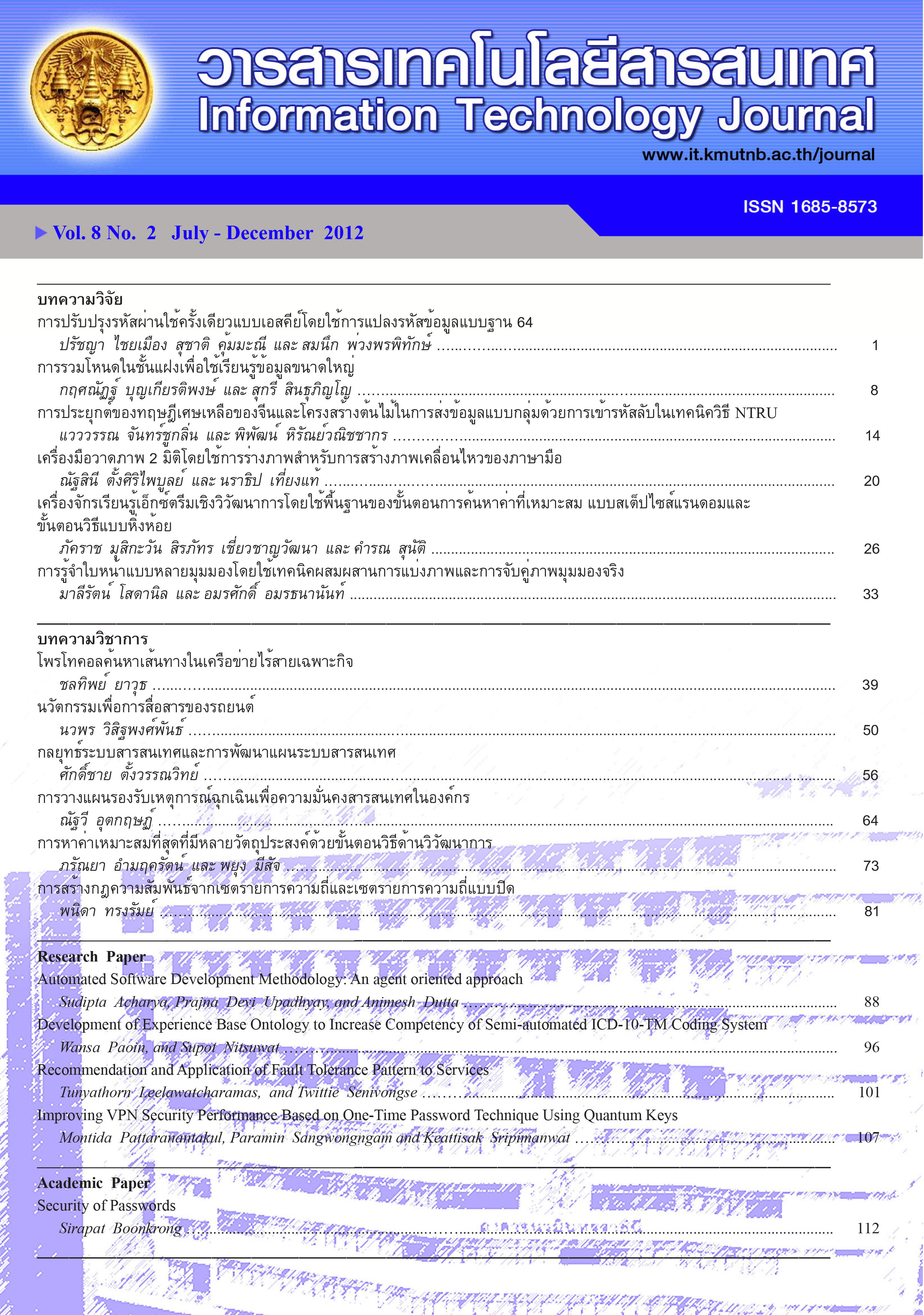การวางแผนรองรับเหตุการณ์ฉุกเฉินเพื่อความมั่นคงสารสนเทศในองค์กร
Main Article Content
Abstract
การวางแผนรองรับเหตุการณ์ฉุกเฉินเพื่อความมั่นคงของสารสนเทศในองค์กรคือการเตรียมการรับเหตุการณ์ฉุกเฉินที่คุกคามต่อสารสนเทศ ซึ่งองค์กรควรให้ความสำคัญ เพราะบางครั้งองค์กรอาจอยู่ในสภาวะที่ไม่สามารถรองรับและตอบสนองเหตุการณ์ดังกล่าวได้ด้วยการปฏิบัติตามแผนปกติ บทความนี้จึงมุ่งเน้นให้เห็นถึงความสำคัญของการวางแผนรองรับสำหรับเหตุการณ์ฉุกเฉินในองค์กร และยังอธิบายถึงขั้นตอนของการจัดทำแผนรองรับเหตุการณ์ฉุกเฉินโดยพิจารณาตามแนวทางปฏิบัติของ NIST SP 800-34 และส่วนประกอบหลัก 4 ประการของแผนรองรับเหตุการณ์ฉุกเฉิน ได้แก่ 1) การวิเคราะห์ผลกระทบทางธุรกิจ (Business Impact Analysis: BIA) 2) การวางแผนเพื่อตอบสนองต่อเหตุการณ์ที่ไม่คาดคิด (Incident Response Plan: IRP) 3) การวางแผนฟื้นฟูเหตุการณ์จากความเสียหายที่รุนแรง (Disaster Recovery Plan: DRP) และ 4) การวางแผนเพื่อดำเนินธุรกิจต่อไปได้ในสถานการณ์ฉุกเฉินที่รุนแรง (Business Continuity Plan: BCP) นอกจากนี้ยังกล่าวถึงประเด็นแนวทางการทดสอบแผนรองรับเหตุการณ์ฉุกเฉิน และในตอนท้ายของบทความนี้ยังได้ยกตัวอย่างการใช้แผนสำหรับเหตุการณ์ฉุกเฉินเพื่อความมั่นคงสารสนเทศ ขององค์กรต่างๆ ทั้งในประเทศไทยและต่างประเทศอีกด้วย
Contingency Support Planning for Organization Information Assurance
Nattavee Utakrit
Contingency planning to support organization information assurance is the preparation for unexpected events that might threaten the security of information resources and assets ofan organization. It is important for organizations to consider different scenarios as particular plans in place may not respond effectively to certain problems. This article focuses on the essential areas of information assurance contingency planning and possible solutions. Moreover, it also explains steps of planning derived from NIST SP 800-34 and describes components of this particular planning technique, which are 1) Business Impact Analysis: BIA, 2) Incident Response Plan: IRP, 3) Disaster Recovery Plan: DRP, and 4) Business Continuity Plan: BCP. In addition, possible testing processes of this contingency plan are also described in detail. Finally, examples of real scenarios set in both Thailand and abroad combined with this technique are presented.


